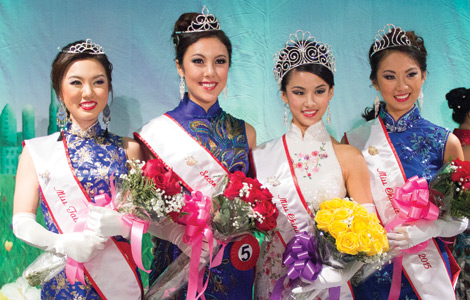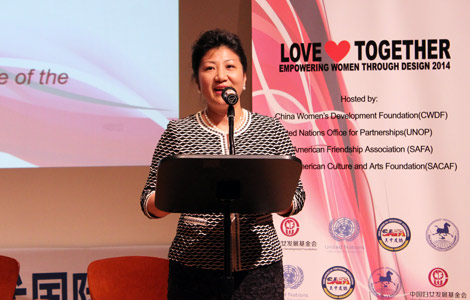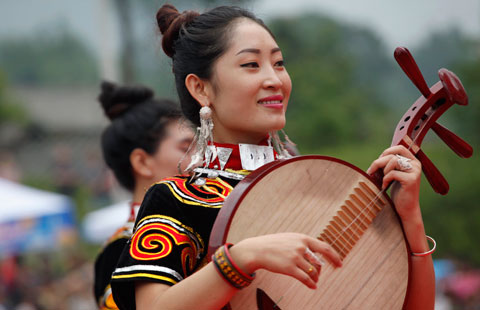Culinary art packs a soft power punch
Updated: 2014-07-28 20:37
By Victor Paul Borg
|
||||||||
Food | Victor Paul Borg
Mention China and most Westerners will think about its food. This is not surprising given the popularity of Chinese cuisine in the West, where some countries have more restaurants serving Chinese dishes than the traditional local fair.
Perhaps this is why China appears exotic and wondrous to many Westerners. And perhaps this is why German Chancellor Angela Merkel during her recent visit to China learned to cook gongbao jiding (diced chicken cooked with peanuts, chili peppers and Sichuan peppercorns) from a cook in Chengdu, capital of Sichuan province.
Presumably, Merkel's gesture was aimed at using food as a cultural bridge between the West and the East. After all, having dinner together in China facilitates social bonding and establishes business relations.
There could be subtle reasons why Merkel's food moment happened in Chengdu. One of them could be associated with the economic emergence of Chengdu. Two airlines, KLM and British Airways, now fly directly between European cities and Chengdu, and Merkel was in the city primarily to visit a Volkswagen factory. Another reason could be the eminence of Sichuan cuisine.
I may be biased because I have lived in Sichuan, but after years of traveling and writing about food extensively I can say that Sichuan cuisine is probably the most varied and creative in the world. It owes its variety to the region's diverse topography and amenable climate that have fostered the farming of an impressive and rich range of spices and vegetables. Not for nothing was Chengdu honored by UNESCO as a food heritage city a few year ago.
Yet Sichuan cuisine is relatively unknown in the West. Throughout history, coastal provinces, especially Guangdong, have accounted for most of the migrant Chinese population in the West. As a result, Cantonese cuisine continues to dominate the Chinese restaurant scene in the West, although many now also serve dishes from other regions, particularly the ever-popular Peking Duck and some Sichuan fare such as mapo toufu and gongbao jiding.
A common feature of Chinese restaurants in the West is that their range of dishes tends to remain unchanged. Some of their perennial sauces and dishes, such as sweet-and-sour and hoisin sauces, do not feature as pervasively in restaurants within China, where the restaurant scene is in rapid evolution. There are several good restaurants that have taken to fusing Cantonese and Sichuan dishes, and some in Chengdu concoct creative dishes that are inventive modernist takes on Sichuan classic techniques and ingredients. Therefore, for someone who eats out regularly in China, most of the Chinese restaurants in the West tend to be rather dull.
The same can be said about the culture of tea drinking, something that Westerners hardly know anything about.
The point is, given the popularity of Chinese restaurants in the West, China can use its cuisine as a key element of its soft power. This endeavor, with the help of Chinese cultural institutes and private businesses, is not at all difficult, especially because awareness about and uptake of Chinese cuisine is growing in the West. For example, doujiang (soya milk) has become a popular food item in the West.
Regressively, at least for me, there is also a concurrent expansion in American fast food outlets in China. But I think the popularity of American fast food is a fad; young people take to it out of curiosity and a warped sense of being trendy and global only to return to Chinese fast food - such as noodle soup and dumplings. I would never, for example, eat a mass-produced uniform burger when I can have fresh handmade noodles for the same price.
Yet another thing that the West can learn from China is how to acquire a taste for different parts of animals, fowl, plants and vegetables. For example, people in Sichuan eat the leaves of the pea plant, and use almost all the organs and parts of animals and fowl to prepare dishes - a commendable practice to prevent waste at a time when food production can hardly keep up with population growth.
Perhaps when another eminent Westerner visits China, he/she will try one of my favorite dishes: fried duck's tongue, a premium dish in many upscale Sichuan restaurants, or even duck's brain, which tastes as good as foie gras.
The author is head equity analyst at Chinese Investors.com, a Shanghai-based financial analysis firm. The views do not necessarily reflect those of China Daily.
(China Daily USA 07/28/2014 page16)

 Chinese naval vessels participate in RIMPAC drill
Chinese naval vessels participate in RIMPAC drill
 Rose Li earns pageant title in Houston
Rose Li earns pageant title in Houston
 Harsher safety measures urged amid scandal
Harsher safety measures urged amid scandal
 Young ambassadors
Young ambassadors
 Wanxiang finds success in US
Wanxiang finds success in US
 The world in photos: July 21 - July 27
The world in photos: July 21 - July 27
 Twin artists 'Os Gemeos' hold exhibition in Sao Paulo
Twin artists 'Os Gemeos' hold exhibition in Sao Paulo
 When did women begin to prefer slim look?
When did women begin to prefer slim look?
Most Viewed
Editor's Picks

|

|

|

|

|

|
Today's Top News
Glitch delays visas for US-bound students
A musical spoof of the Clinton years
Good times beckon for Latin American ties
Investment from China to boom
US sets China solar dumping margins
iPhones' access to data faces scrutiny
Chinese have a crush on Harvard?
Scandal-hit China food firm withdraws products
US Weekly

|

|






